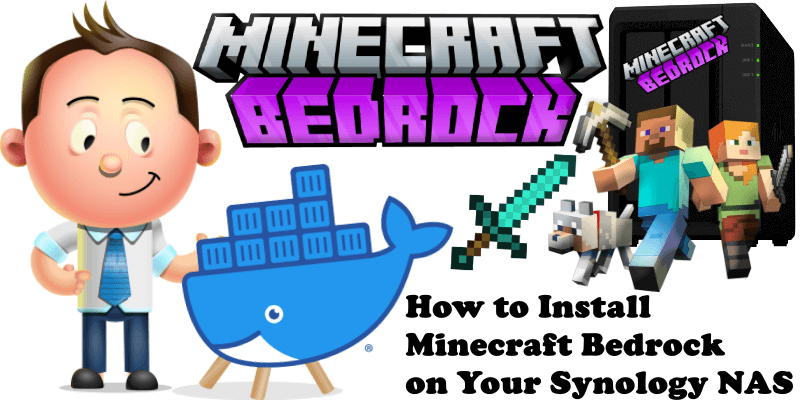
Minecraft is a game where players place blocks and go on adventures. This includes anything from crafting simple items like containers or weapons, to building structures like houses, castles, and cities, or even making complex mechanical-devices, all within the game’s world. Minecraft Bedrock servers allow players to play online or via a local area network with other people. What is the difference between Minecraft Java Edition and Minecraft Bedrock Edition? Minecraft Java Edition is only available on Windows, Mac, and Linux. Minecraft Bedrock Edition is available on Windows 10 and 11, Xbox One, Xbox Series S and X, PlayStation 4 and 5, Nintendo Switch, Fire OS/TV, Android, iOS, Windows Mobile and Samsung Gear VR. In this step by step guide I will show you how to install Minecraft Bedrock Server on your Synology NAS using Docker & Portainer.
STEP 1
Please Support My work by Making a Donation.
STEP 2
Install Portainer using my step by step guide. If you already have Portainer installed on your Synology NAS, skip this STEP. Attention: Make sure you have installed the latest Portainer version.
STEP 3
Go to File Station and open the docker folder. Inside the docker folder create one new folder and name it minecraft-bedrock. Follow the instructions in the image below.
Note: Be careful to enter only lowercase, not uppercase letters.
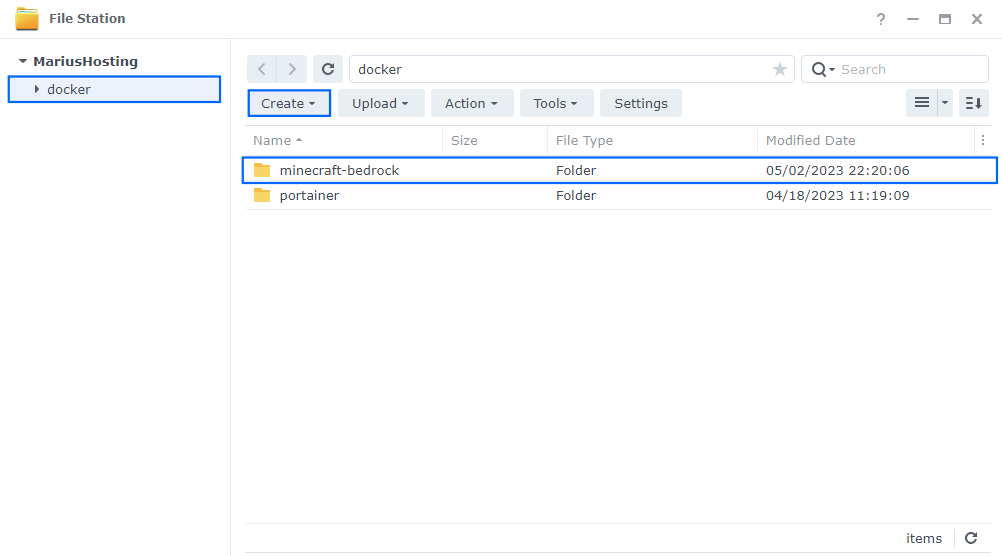
STEP 4
Now create two new folders inside the minecraft-bedrock folder that you created at STEP 3 and name them config and worlds. Follow the instructions in the image below.
Note: Be careful to enter only lowercase, not uppercase letters.
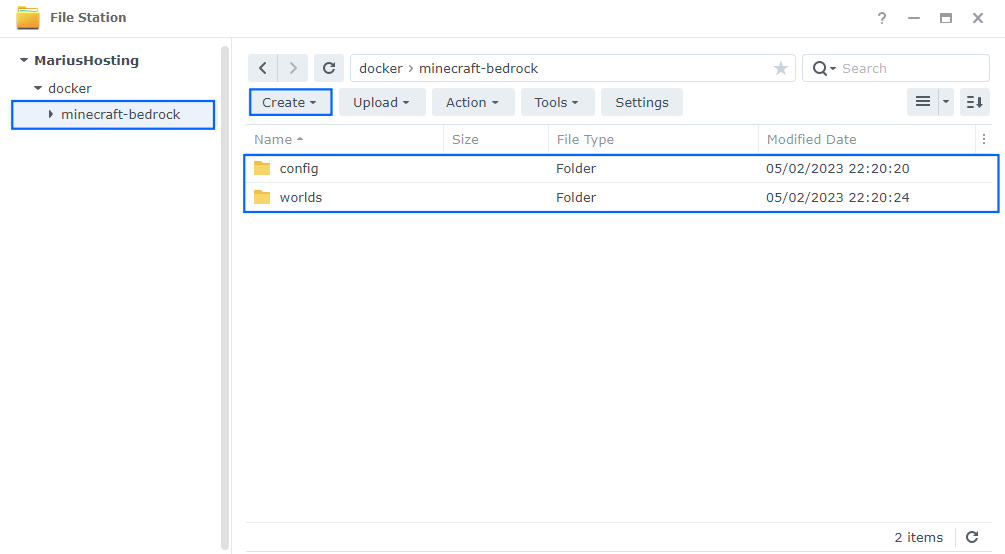
STEP 5
Log into Portainer using your username and password. On the left sidebar in Portainer, click on Home then Live connect. Follow the instructions in the image below.

On the left sidebar in Portainer, click on Stacks then + Add stack. Follow the instructions in the image below.

STEP 6
In the Name field type in bedrock. Follow the instructions in the image below.
services:
minecraft-server:
image: ghcr.io/hexlo/minecraft-bedrock-server:latest
container_name: Minecraft-Bedrock
hostname: minecraft-server
security_opt:
- no-new-privileges:true
read_only: true
user: 1026:100
ports:
- 20132:19132/udp
volumes:
- /volume1/docker/minecraft-bedrock/config:/bedrock-server/config:rw
- /volume1/docker/minecraft-bedrock/worlds:/bedrock-server/worlds:rw
restart: on-failure:5
Note: Before you paste the code above in the Web editor area below, change the value numbers for user with your own values. (Follow my step by step guide on how to do this.) 1026 is my personal UID value and 100 is my personal GID value. You have to type in your own values.
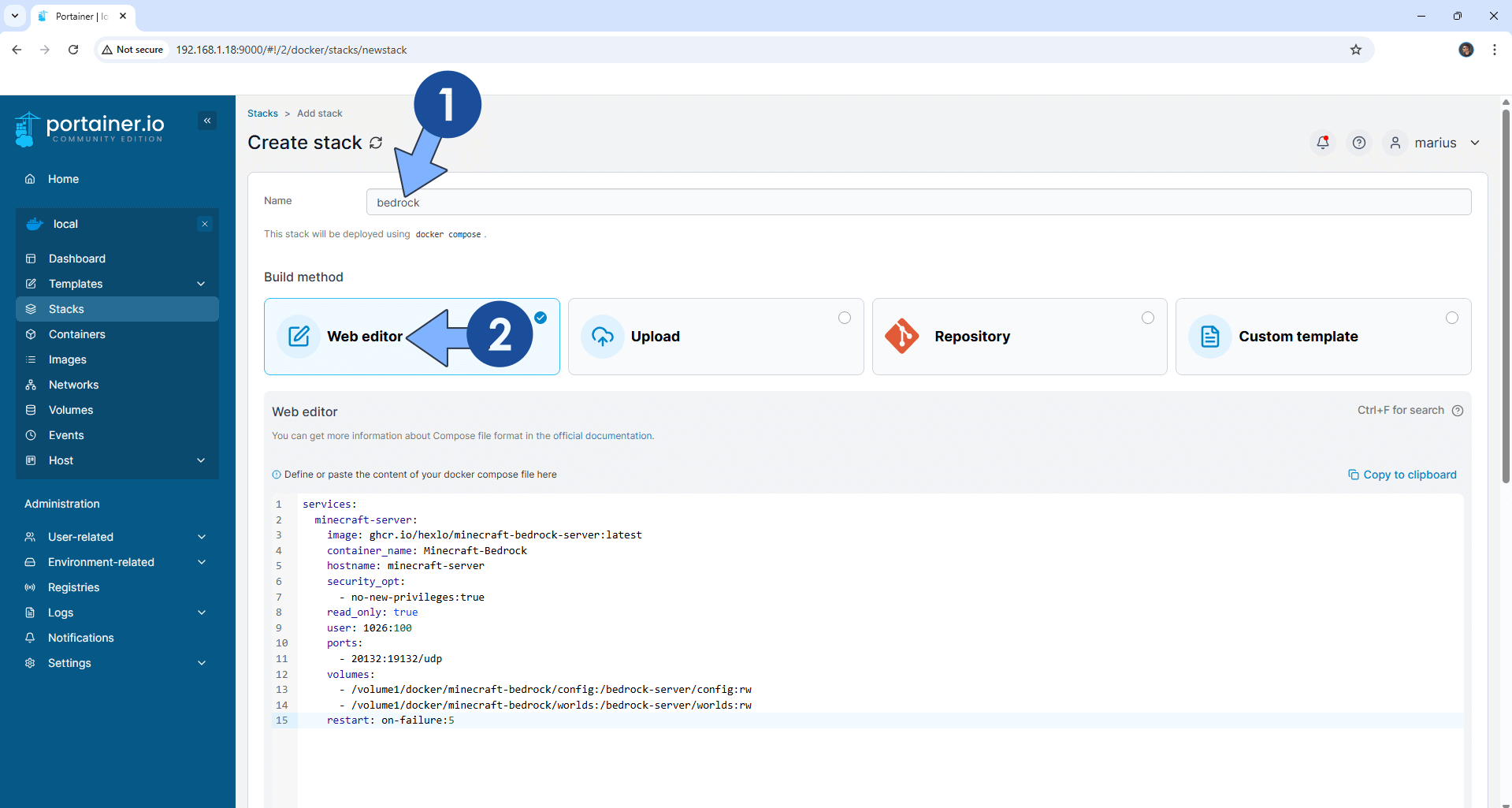
STEP 7
Scroll down on the page until you see a button named Deploy the stack. Click on it. Follow the instructions in the image below. The installation process can take up to a few minutes. It will depend on your Internet speed connection.
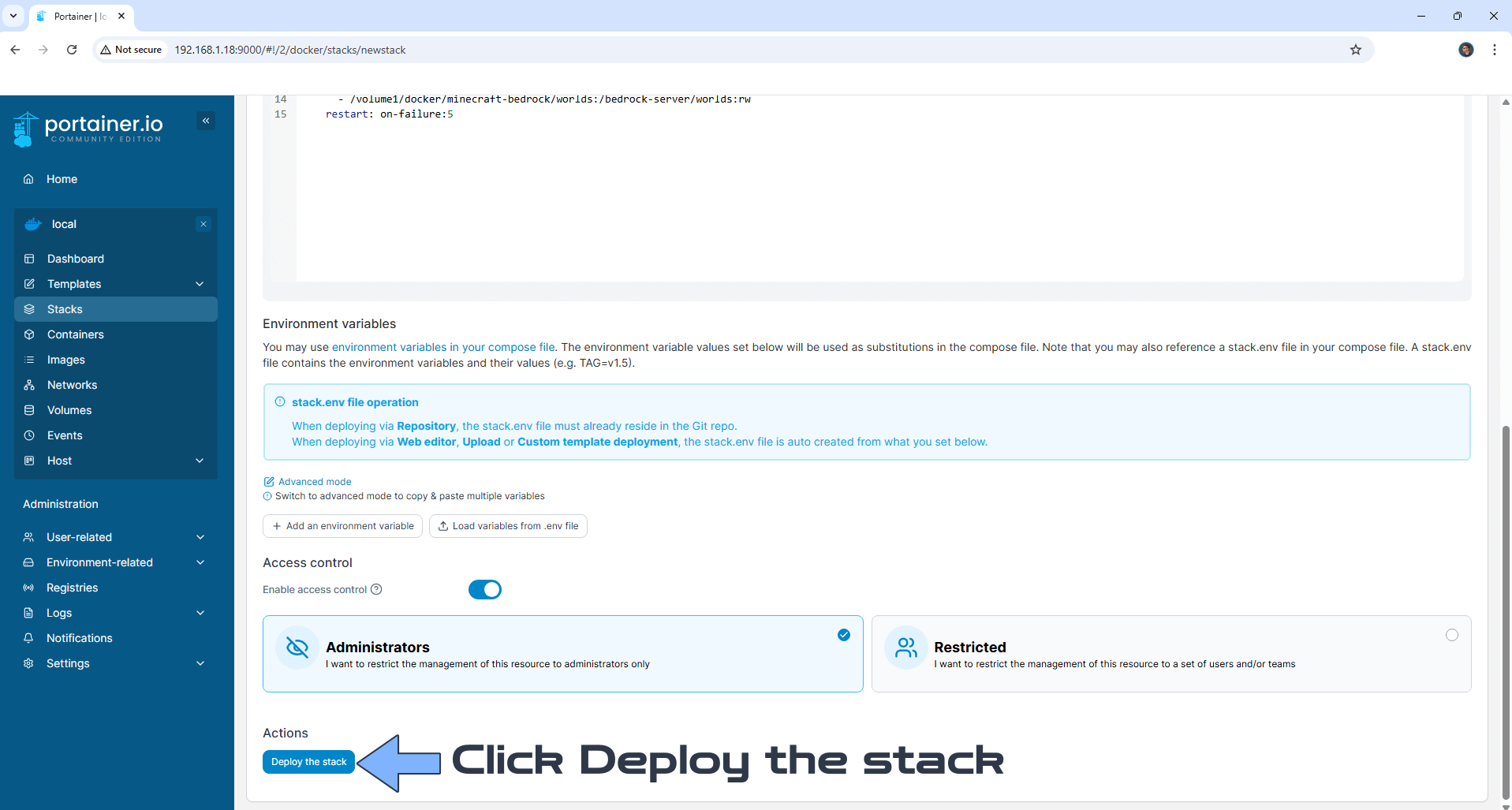
STEP 8
If everything goes right, you will see the following message at the top right of your screen: “Success Stack successfully deployed“.

STEP 9
Please Support My work by Making a Donation. Almost 99,9% of the people that install something using my guides forget to support my work, or just ignore STEP 1. I’ve been very honest about this aspect of my work since the beginning: I don’t run any ADS, I don’t require subscriptions, paid or otherwise, I don’t collect IPs, emails, and I don’t have any referral links from Amazon or other merchants. I also don’t have any POP-UPs or COOKIES. I have repeatedly been told over the years how much I have contributed to the community. It’s something I love doing and have been honest about my passion since the beginning. But I also Need The Community to Support me Back to be able to continue doing this work.
STEP 10
Wait approximately 3-5 minutes, then try to access your own server via the Minecraft Bedrock edition game. Go to Servers then click Add Server. Follow the instructions in the image below.
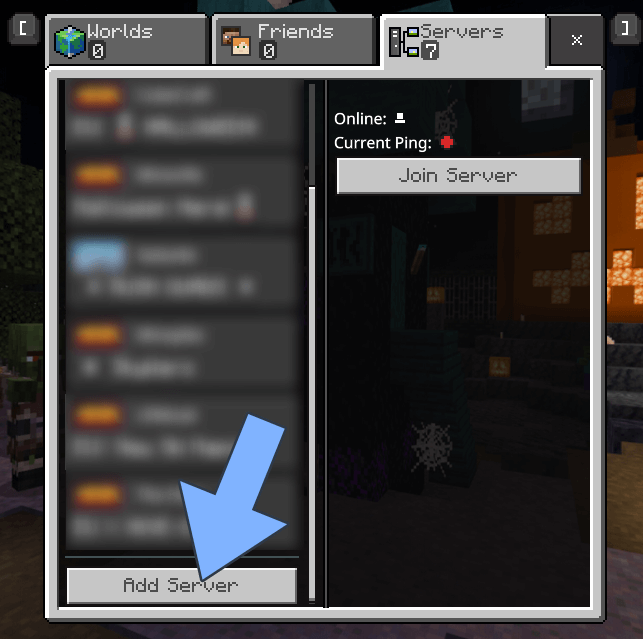
STEP 11
In the Server Address area type in your NAS IP and in the Port area type in 20132. Click Save then Play. Follow the instructions in the image below.
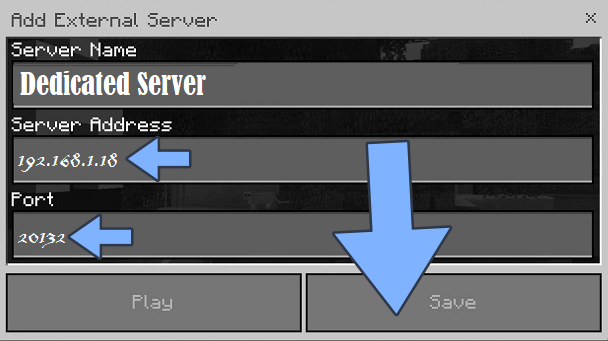
STEP 12
If you want to change some Minecraft Bedrock server settings, go to File Station /docker/minecraft-bedrock/config – download the server.properties file on your computer, then modify it as you see fit using a text editor. Once the modification is done, overwrite the server.properties file in File Station with your own modified server.properties file. To apply the change, it’s mandatory to restart the Minecraft-Bedrock container.
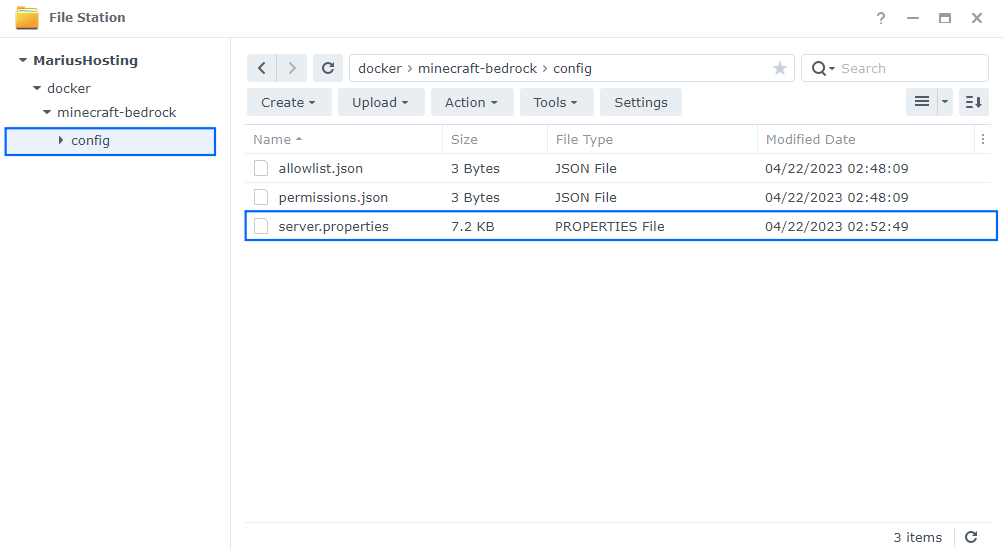
Modify the server.properties file as you see fit.
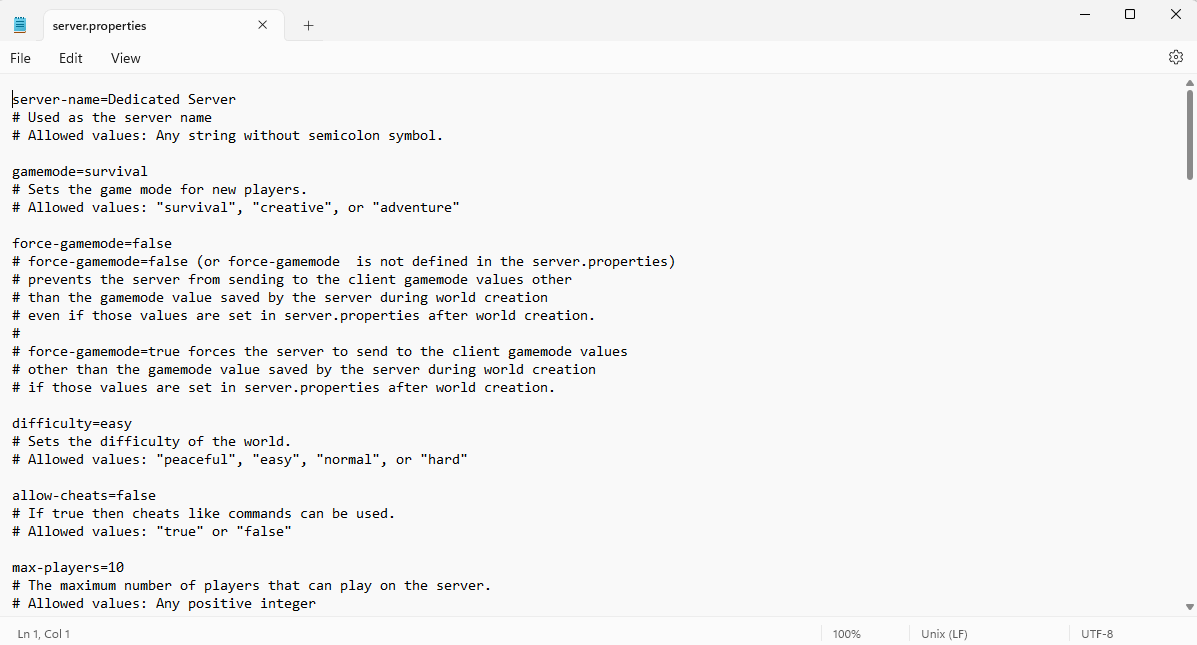
If you encounter issues by using this container, make sure to check out the Common Docker issues article. This Minecraft server was successfully tested on Xbox and PlayStation 5.
⚠️Note: If you want to run the Minecraft Bedrock Server container over HTTPS, check my guide on How to Run Docker Containers Over HTTPS. Remember to port forward ports 19132 and 20132 UDP on your router pointing to your NAS to make it accessible externally. In order to make Minecraft Bedrock work via HTTPS, it’s mandatory to activate WebSocket. To avoid connection issues with Bedrock you should use Google DNS or Cloudflare DNS.
Note: Find out how to update the Minecraft Bedrock Server Edition container with the latest image.
Note: To avoid connection issues with Bedrock you should use Google DNS or Cloudflare DNS.
Note: Can I run Docker on my Synology NAS? See the supported models.
Note: How to Back Up Docker Containers on your Synology NAS.
Note: How to Free Disk Space on Your NAS if You Run Docker.
Note: How to Schedule Start & Stop For Docker Containers.
Note: How to Activate Email Notifications.
Note: How to Add Access Control Profile on Your NAS.
Note: How to Change Docker Containers Restart Policy.
Note: How to Use Docker Containers With VPN.
Note: Convert Docker Run Into Docker Compose.
Note: How to Clean Docker.
Note: How to Clean Docker Automatically.
Note: Best Practices When Using Docker and DDNS.
Note: Some Docker Containers Need WebSocket.
Note: Find out the Best NAS Models For Docker.
Note: Activate Gmail SMTP For Docker Containers.
This post was updated on Wednesday / November 26th, 2025 at 1:37 AM
